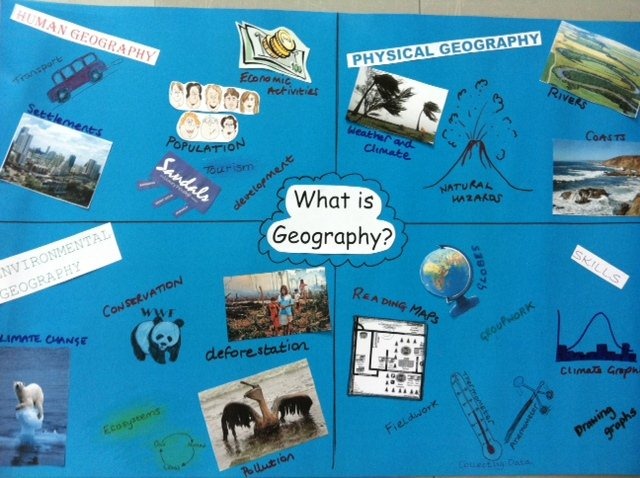Archive for August, 2012
Discourse And Bias, Knowledge and Filters
Aug 28th
Some Key Questions:
· What are the differences between the following: information, data, belief, faith, opinion, knowledge and wisdom?
· How much of one’s knowledge depends on interactions with others?
· To what extent does personal or ideological bias influence our knowledge claims?
· Does knowledge come from inside or outside? Do we construct reality or recognise it?
Task 1. Look at the following picture. Generate a single sentence headline statement to describe / explain what has happened here.

Source: Photo courtesy FEMA (Public Domain)
Task 2. We will now discuss / share our headlines, and identify any bias.
What assumptions / presuppositions do you include so that your statement / headline makes sense? Why are these presuppositions good? Why can they be disadvantageous?
What is the most neutral statement that we can arrive at as a class?
Task 3 – Explore how things / ideas / concepts might be viewed differently in different cultures.
View this slideshare, which contains the very clever infographics by Yang Liu and take it in turns to explain what each slide is trying to imply about cultural assumptions:
Discuss any examples you know of, perhaps between the different cultural backgrounds of the students in this class.
Task 4 An excellent article on Critical Thinking by Richard van de Lagemaat
Access his article by clicking here – http://ibo.org/ibworld/documents/may02.pdf – and going to page 15. Read it carefully and be prepared to discuss.
Task 5 Avatar.
Most people have seen this movie. To remind …
Avatar is about an entirely different world, set in the future. It is not about our world right?
Or is it? Perhaps an imagined world like this is filtered through the creator’s experiences of this world.
Discuss. What (cultural) assumptions are made in the movie? What biases? What might the audience be learning / accepting about our world by watching this that might in fact not be true / accurate / fair?
Task 6 Find an online article, video clip, image, or other source that reveals cultural bias and messages that seem to be easily accepted by society, especially if we don’t apply some critical thinking.
Some ideas on the sort of resources you can include:
- A youtube trailer to a movie
- An advert
- A poem
- A news article
Some ideas of the sorts of things which the resource gives some biased ideas about:
- Role of men / women
- Ideas of beauty
- Status / jobs / money
- Assumptions about different nationalities / ethnic groups
- Assumptions about proper behaviour – right and wrong
- Hierarchy / Power
Make the resource easily accessible – a short youtube clip, an image, an easy to read news article. You can take this from any culture.
Share a link to the resource. Include some text to explain the discourse and bias that is contained inside the resource:
The link to the resource.
- What messages are conveyed that may in fact not be real are conveyed.
- Why are these messages accepted by society even if they don’t match reality?
- How do these messages / assumptions/ biases continue to survive?
- Extra: can you link this to the filters mentioned in the article (task 4) – perception, language, emotion, and reason? (Don’t worry if not at this stage, we will go into these inn much more depth later in the course).
Task 7 – Reflect
·Describe in your own words what we mean by the term ‘filter’ in TOK?
· What do you think is the most important / influential / powerful filter that affects you?
· Why is it important to know about the filters and how they affect the way you view the world?
Much credit goes to Mr Kevin Hoye, originator of many of the ideas contained in these tasks.
Labour Intensive versus Capital Intensive
Aug 21st
1) Find out / discuss the meanings of these two phrases
2) Can you tell which is which in the videos below?
Introduction to TOK – What is Knowledge?
Aug 21st
Key Questions:
1. What does it mean to know something? What is knowledge? How do we know what is real?
2. How is Knowledge different from Belief?
3. What do we mean by the word True?
Resources to help us:
The TOK diagram.
How do we know what is real? …
Are we living in The Matrix?
Plato’s Allegory of the Cave
If you like the above animation (which is quite dated but very useful for explaining Plato’s allegory, you might also like this shorter,more recently produced version:
More information
http://en.wikipedia.org/wiki/Allegory_of_the_Cave
http://tamayaosbc.wordpress.com/2008/07/10/74/
http://www.philosophypages.com/hy/2h.htm

Image – licensed under CC, details here.
Descartes and the Matrix
Geography Matters
Aug 11th

Big Picture Questions:
![]() Why is it important to study Geography?
Why is it important to study Geography?
![]() How do we think, speak and write as Geographers?
How do we think, speak and write as Geographers?
Watch and Discuss:
Source: Geographical Association
Think and Discuss / Share:
- What is Geography?
- Where are the places I have studied in Geography?
- Why is Geography important?
- Who is Geography important to?
You need to be able to use special key words in Geography. This slide show introduces some, and you can view this as a class.
You also need to recognise that there are different types of Geography.
Suggested Activity 1 – Using Photographs in Geography
In pairs, download the worksheet below by clicking here or on the picture below.
(Too slow to download? Try clicking here instead).
For each picture, discuss and agree what could be suitable questions to ask about the picture as a Geographer. Record your questions.
As an example, look at the first picture, on the top left. You could ask …
- Where is it?
- How was the arch formed?
- How is the beach formed?
- How does the sea affect the land here?
Afterwards, as a class, we could share our questions and others in the class might try and answer some of them.
Suggested Activity 2 – Earth from Above
Introducing Yann Arthus-Bertrand, an exceptional French photographer who has taken countless aerial photos of the world’s surface from a plane or helicopter. He cares very much about the future of this planet.
Also introducing Google Earth, which we will be using later in this course.
Working in a small group (two or three) select a photo from Yann’s website. You can download an individual image. Prepare a short piece of text to describe the photo as a Geographer, using Key Words and Pointing out the difference between Physical and Human Geography. Explain why it is important to know about this. Share the image and the text with your teacher, by email.
Explore the photos here, and notice how you can choose your country.
Suggested Activity 3 – Focus Questions
1. Write a sentence to say what the word “geography” means.
2. Write an explanation of what the study of “Physical geography” is and give some examples of particular topics that are included in the study of physical geography.
3. Explain what the study of “Human Geography” is, and give examples of some human geography topics.
4. How can the knowledge and study of geography be useful?
Terminology; learning to speak geographically!
Geography has its own set of words like every other subject.
Start a glossary (word list with meanings) of geographical terms. Start with these words. Take care to spell them correctly.
Relief Drainage Vegetation Settlement Climate Population Transport Work or employment Economic Activity
(The first slideshow under ‘Discover’ above should help you).
Share your thoughts on what Geography is and why it is important with your neighbour. Be prepared to share these thoughts with the whole class.
1) Find an image of a really interesting place you have visited outside of Bangkok at some point in your life. (Preferably a picture you or a family member/friend have taken yourself, but if not you might use this flickr search link – if so, you should include the name of the flickr user who created the photo you choose.
2) Write 50 – 150 words of text to say why that place is so important to you.
3) Bonus points if you can include three or more Geography key words and pointing out if it shows Physical, Human or Environmental Geography or a mixture of these.
3) Create a postcard from steps 2 and 3 to share with your Geography teacher next time you see them.
These activities are designed to last for four single lessons / two double lessons and one homework.
Extension Materials:
Geography Key Concepts Slideshare
You can see a short video of one of Yann’s photo exhibitions here. Yann has also created an hour long movie called Home.
Credits:
Earth ‘Blue Marble’ Image: Public Domain, by NASA as stored here.
Dustbin game discovered on http://www.geographyalltheway.com
Alternative Approach for the Connect section:
Use a Maps from Memory Activity – use an image like this one here. Thanks Caroline.










